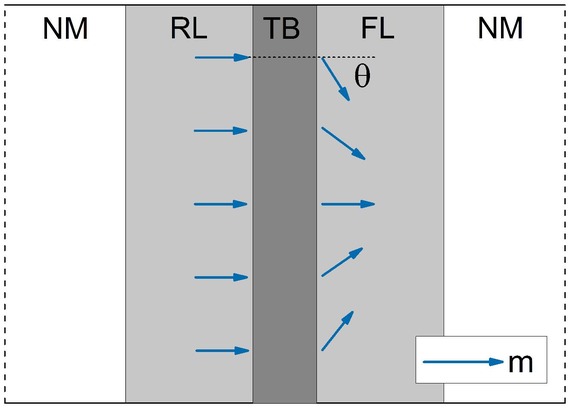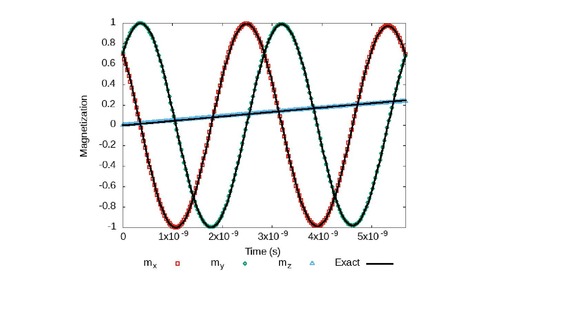 |
|
||||
BiographyMohamed Mohamedou was born on October 1991 in Akjoujt, Mauritania. He graduated from Paris-Saclay University in 2016 where he obtained a Master’s Degree in Numerical Analysis/Applied Mathematics. Afterwards, he worked on numerical modeling for different industrial and academic projects spanning electromagnetism and mechanics engineering. In September 2019 Mohamed joined the Institute for Microelectronics where he started working towards his doctoral degree. His research is focused on developing high performance numerical simulations-based micromagnetics approaches to investigating non-volatile magnetic memory devices. |
|||||
Numerical Integration of the Landau-Lifshitz-Gilbert Equation with the Inclusion of Spin-Transfer-Torque
The evolution of magnetization in a ferromagnetic material is usually described by the Landau-Lifshitz-Gilbert (LLG) equation. The time-dependent magnetization dynamics under an effective field Heff are modeled using the LLG equation. The effective field (Heff) encapsulates the contributions of the external field (HExt), the anisotropy field (Hani), the exchange field (Hex), the demagnetizing field (Hdem) and the temperature field (Htrm). In order to have switching of the magnetization in the free layer, a torque must be exerted on the magnetization by a spin-polarized current. To model this switching phenomenon, an additional term, Ts(m), must be added to the LLG equation:
When doing simulations of spin-transfer-torque switching, the current-dependent torque can be approximated by a Slonczewski-like term that does not require the computation of spin accumulation. This does not allow for a precise torque computation, however, or for the computation of the torque in the reference layer, only in the free layer. To know the torque in all the magnetic layers in the structure, one needs to know the spin accumulation, and the equations that describe its behavior are the spin-drift-diffusion equations. When dealing with a magnetic tunnel junction, we know that the macroscopic dependence of the conductivity is described by eq.(5). The idea is to have a charge current that redistributes according to the local relative orientation of the magnetization in the two ferromagnetic layers.
To numerically solve this first-order-in-time LLG equation without torque, a common schema based on a finite difference method is often used in the literature. The time integration of this equation, eq.(1), presents two main challenges: the strong nonlinearity and the non-convex constraint |m|2 =1. To treat the nonlinearity with a finite difference method is computationally expensive as adaptation of such an approach to complex structures is not always a straightforward task.
To tackle these difficulties, we use a semi-implicit method based on an equivalent reformulation of the model in the tangent space, Ͳm, discretized by finite elements and require only the solution of one linear system per time-step. The non-convex constraint is satisfied at the discrete level by applying a mapping projection to the computed solution at any time-step.

Fig. 1: Structure of the mesh simulation.

Fig. 2: Simulation results with: α = 0.02, γ = 2.213× 10-5


